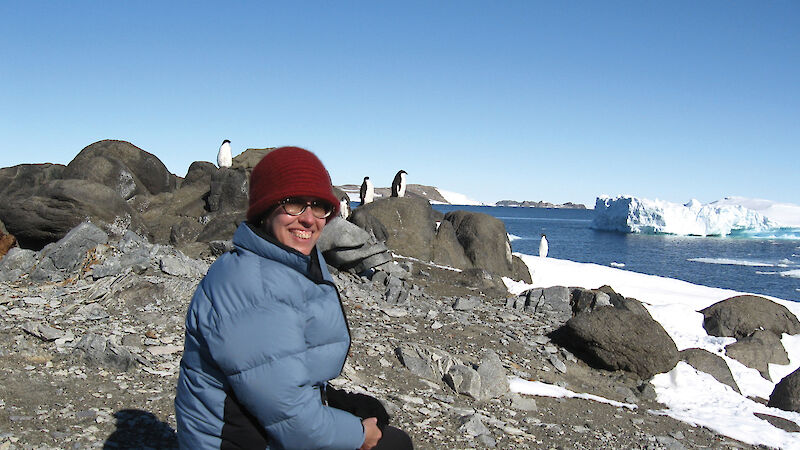Historian Lynette Finch travelled to Antarctica as an Arts Fellow in the 2007/08 season, as research for her book about Antarctic surveyor and explorer Syd Kirkby. Fixing Antarctica: Mapping the Frozen South was published in October 2014.
Author’s Note
Syd is a significant and inspirational explorer whose contact with Antarctica began in 1955 when he first wintered at Mawson station. At that time 85% of the continent had never been seen. Most of the 42% of the vast frozen continent claimed by Australia was completely unknown. Over the next 20 years, Syd Kirkby explored and surveyed more of the Australian Antarctic Territory (AAT) than any other person.
He has made his diaries available and we have enjoyed hours of interviewing time together and that combination of a great subject and rich resource material, combined with newspaper accounts, parliamentary accounts, photographs and contemporary scientific papers, all set in the most extraordinary continent on Earth has, quite simply, created historian’s heaven for me. It doesn’t get better than this.
Antarctic impression
For my biography of the surveyor Syd Kirkby, it was essential to know the places in which the events occurred. I had completed 18 months of research about the man who explored vast tracks of Australian Antarctic Territory during the late 1950s and early 1960s but despite the preparation, I still couldn’t write.
The Australian Antarctic Arts Fellowship has been crucial to my being able to craft this extraordinary story into a book manuscript. Reading station logs in situ, being able to look out the window at the mountains mentioned as field parties set out or returned from exploratory journeys is a powerful and enlightening part of crafting the history.
I’d been bunkered down in a blizzard in Brooke’s hut near Davis station and although we were comfortable inside the small hut, I’m still more able to empathise with the three men in a polar pyramid tent, caught for 12 days in a 150-knot blizzard, high in the plateau beyond Mawson in 1960.
To read it in a diary is one thing. To know what a blizzard sounds, looks and feels like, and to know that — like them — we simply had to wait until it was over, provides layers of understanding I could never have achieved through books or movies or photos. The journey across the vast southern ocean, the trips into the mountains, lakes and valleys, the journeys by air or Hägglunds across plateaux and ranges mentioned in diaries — all these experiences bring to life the stories. Walking about at the stations, particularly at Mawson, was also crucial to locating the stories in their geographical contexts. During these seven weeks, I have drafted five of the eight (or nine) chapters.

